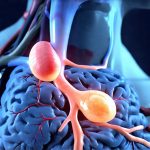Nausea is an incredibly unpleasant experience, often signaling something isn’t quite right within our bodies. It’s more than just feeling sick to your stomach; it’s a complex physiological response that can disrupt daily life and leave you searching for relief. The immediate question when nausea strikes is frequently: “Can I even eat anything?” This seemingly simple inquiry opens up a surprisingly nuanced discussion, because the answer isn’t a straightforward yes or no. It depends heavily on the underlying cause of the nausea, its severity, and your individual tolerance levels. Ignoring the body’s signals can sometimes worsen the situation, but so can rigidly avoiding all food, particularly if the episode is prolonged.
Navigating what to eat (or not eat) during a bout of nausea requires understanding that our digestive system behaves differently when it’s already stressed. The usual rules about healthy eating may temporarily need adjusting, prioritizing gentleness and minimizing further irritation. It’s crucial to differentiate between feeling nauseous and actively vomiting; the strategies differ significantly. Furthermore, recognizing potential red flags – signs that suggest a more serious underlying condition – is vital for knowing when to seek professional medical attention. This article will explore these considerations, providing insight into making informed decisions about food and drink during nausea episodes, always emphasizing the importance of listening to your body’s cues and seeking appropriate healthcare if needed.
Understanding Nausea and Its Causes
Nausea isn’t a disease in itself but rather a symptom – a signal that something else is happening within the body. Identifying potential causes helps determine the best course of action, including dietary adjustments. The origins of nausea are incredibly diverse, ranging from relatively benign factors to more serious medical conditions. Common triggers include:
- Food poisoning or food intolerances
- Motion sickness
- Pregnancy (“morning sickness”)
- Viral or bacterial infections (like stomach flu)
- Medication side effects
- Anxiety and stress
- Migraine headaches
- Certain neurological conditions.
The severity of nausea also varies greatly. Some experience a mild queasiness that doesn’t interfere with daily activities, while others are completely incapacitated by intense waves of sickness. This difference significantly impacts what – if anything – can be tolerated during an episode. It’s important to remember that attempting to “push through” severe nausea when your body is signaling distress can actually prolong the discomfort and potentially lead to vomiting or dehydration. The goal isn’t necessarily to cure the nausea with food, but rather to manage symptoms and avoid exacerbating them.
The way our bodies respond to different foods changes during periods of illness. Normally, a robust digestive system efficiently processes a wide variety of nutrients. However, when nauseous, the gastrointestinal tract becomes more sensitive, and even seemingly harmless foods can trigger discomfort or vomiting. This is why bland, easily digestible options are often recommended – they place less stress on the already overwhelmed system. Prioritizing hydration is also paramount, as vomiting and diarrhea (often accompanying nausea) can quickly lead to dehydration, which only worsens the overall condition. If you suspect a food related cause, consider how to know when a food is no longer safe to consume.
What To Eat (And Avoid) When Nauseous
When experiencing nausea, dietary choices should focus on minimizing further irritation and promoting gentle digestion. The BRAT diet – Bananas, Rice, Applesauce, Toast – has long been a go-to recommendation, and for good reason. These foods are low in fiber, easily digestible, and bind the stool, which can be helpful if diarrhea is also present. However, relying solely on the BRAT diet for extended periods isn’t ideal, as it lacks essential nutrients. It’s best considered a temporary stepping stone towards reintroducing more substantial foods as tolerance improves.
Beyond the BRAT diet, other gentle options include:
– Clear broths (chicken or vegetable) – provide hydration and electrolytes.
– Plain crackers (saltines are often well-tolerated) – can help absorb stomach acid.
– Dry toast – similar to crackers, offers a bland base for settling the stomach.
– Oatmeal – provides some carbohydrates for energy without being overly heavy.
Conversely, there are several food groups that should generally be avoided during nausea:
– Fatty or fried foods – difficult to digest and can exacerbate symptoms.
– Spicy foods – irritate the stomach lining.
– Strong-smelling foods – can trigger vomiting in sensitive individuals.
– Dairy products (for some) – lactose intolerance may worsen nausea.
– Caffeine and alcohol – both can dehydrate and irritate the digestive system.
Small, frequent meals are generally better than large ones. Overfilling the stomach increases pressure and can induce vomiting. Start with very small portions and gradually increase as tolerated. Pay close attention to your body’s signals; if a particular food causes discomfort, stop eating it immediately. It is also important to avoid lying down immediately after eating, as this can contribute to acid reflux and worsen nausea. If you are concerned about heartburn from certain foods, is it safe to drink orange juice might provide some relief?
Hydration Strategies During Nausea
Dehydration is a significant concern during bouts of nausea, particularly if vomiting or diarrhea are present. Even without active vomiting, the body loses fluids due to increased metabolic activity associated with illness. Maintaining adequate hydration is crucial for recovery and preventing further complications.
- Sip small amounts of clear liquids frequently throughout the day. Water is always a good choice, but electrolyte solutions (like Pedialyte or sports drinks diluted with water) can help replenish lost minerals.
- Avoid gulping down large quantities of fluid at once, as this can trigger vomiting.
- Consider ice chips if you struggle to keep fluids down – they melt slowly and provide gradual hydration.
- Ginger ale (real ginger ale, not just flavored soda) has been traditionally used for nausea, but its effectiveness varies from person to person. The small amount of ginger may offer some soothing benefits.
If you find it difficult to tolerate liquids, try sucking on ice chips or popsicles. If vomiting is persistent and severe, leading to significant dehydration, seek medical attention immediately. Signs of dehydration include decreased urination, dark-colored urine, dizziness, and extreme thirst. Don’t wait for these symptoms to become severe before seeking help. Understanding your body’s reaction can also involve exploring is it safe to self diagnose food sensitivities that might be a cause.
The Role of Ginger
Ginger has a long history of use as a natural remedy for nausea, and there’s growing scientific evidence to support its effectiveness. While the exact mechanism isn’t fully understood, ginger is believed to affect gastric motility – the movement of food through the digestive tract – potentially reducing feelings of sickness. It may also have anti-inflammatory properties that contribute to its soothing effect.
- Ginger can be consumed in various forms: fresh ginger root, ginger tea, ginger candies (look for those made with real ginger), or ginger capsules.
- Start with small amounts and gradually increase as tolerated. Excessive ginger intake can sometimes cause heartburn or other digestive issues.
- For ginger tea, steep a few slices of fresh ginger in hot water for 10-15 minutes.
- Ginger ale may provide some benefit if it contains real ginger, but many commercially available brands contain only artificial flavoring and minimal actual ginger.
It’s important to note that ginger isn’t a cure-all. It may help alleviate mild to moderate nausea, but it’s unlikely to be effective for severe cases or those caused by underlying medical conditions. If your nausea persists despite trying ginger, consult with a healthcare professional. Also, individuals taking blood thinners should exercise caution when using ginger supplements, as it can potentially interact with these medications. Some people find relief from dietary restrictions – is there a safe way to enjoy chocolate with GERD?
When To Seek Medical Attention
While many episodes of nausea are self-limiting and resolve on their own with dietary adjustments and rest, there are situations where seeking medical attention is crucial. Don’t hesitate to consult a healthcare professional if you experience any of the following:
- Severe or persistent vomiting that prevents you from keeping down fluids for more than 24 hours. This can lead to dangerous dehydration.
- Nausea accompanied by other concerning symptoms, such as fever, severe abdominal pain, blood in vomit, dizziness, confusion, or difficulty breathing. These could indicate a more serious underlying condition.
- Nausea that lasts for several days without improvement, despite trying self-care measures.
- Suspected food poisoning – especially if multiple people who ate the same food are experiencing similar symptoms.
- Nausea related to pregnancy (hyperemesis gravidarum) that is severe and interferes with your ability to eat or drink.
If you suspect a digestive issue, it might be time to ask when to ask for a motility scan.
This article provides general information about managing nausea and should not be considered medical advice. Always consult with a qualified healthcare professional for any health concerns or before making any decisions related to your treatment or care. Is it safe to take antacids long term if you suffer from GERD?


















